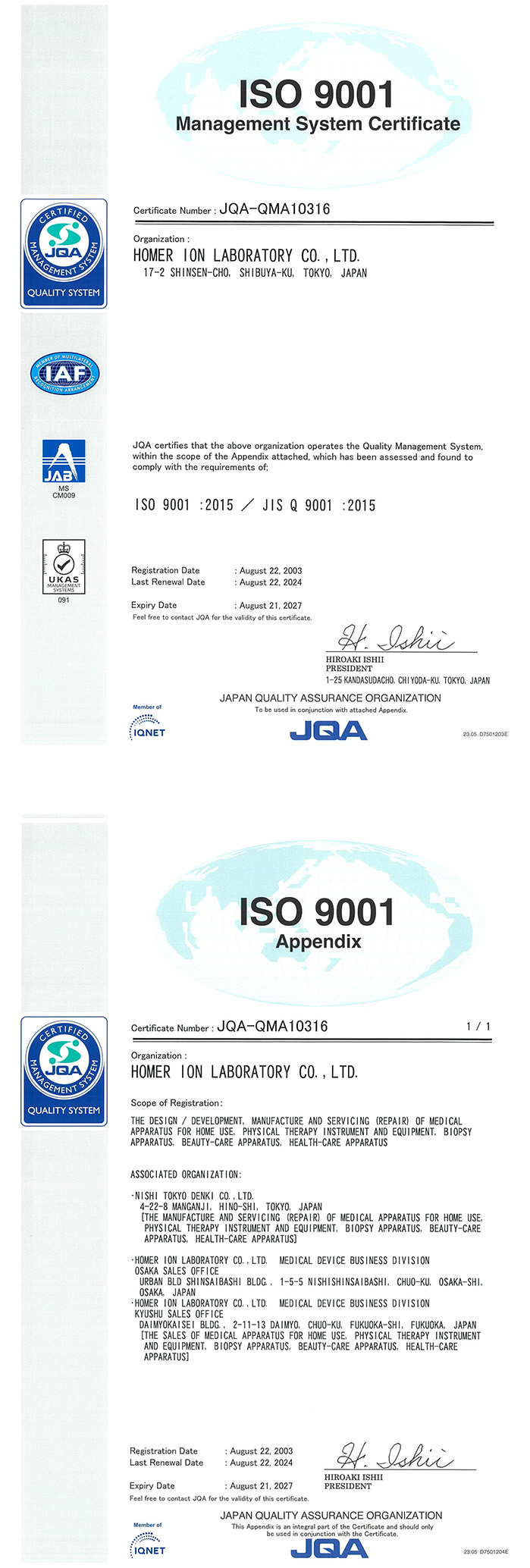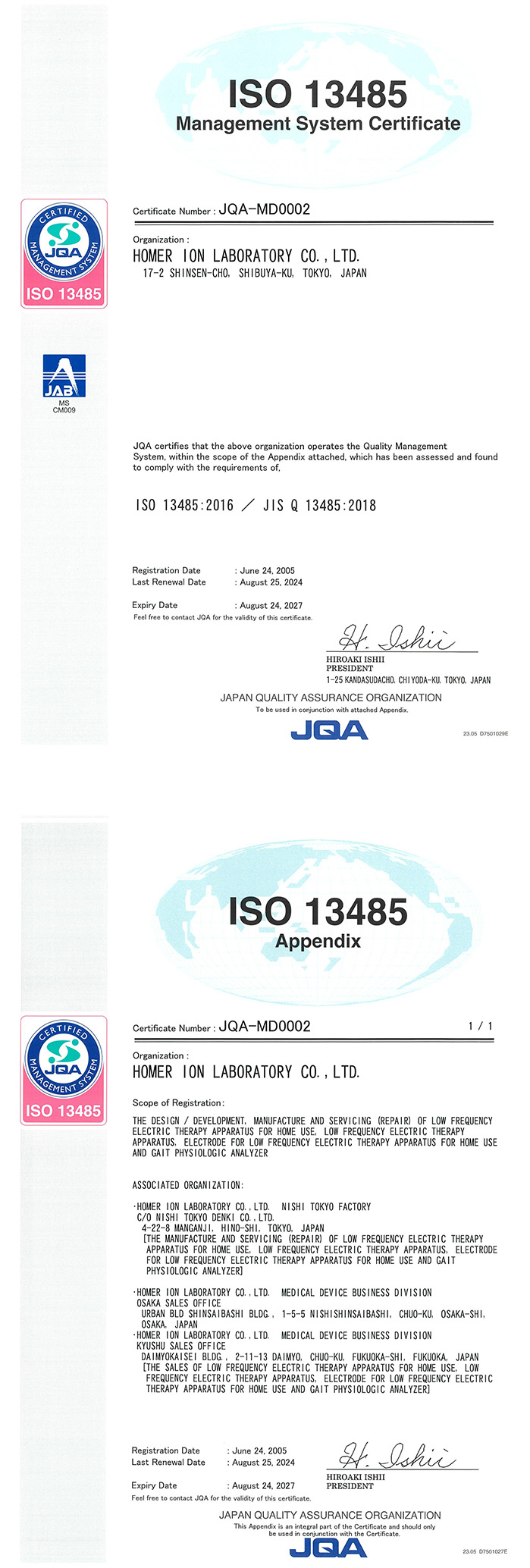

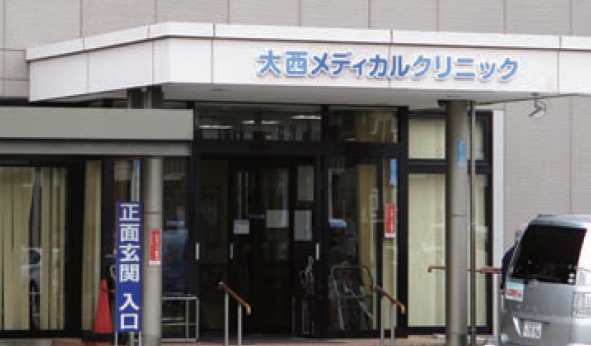
Onishi Medical Clinic, located in Inami Town, Kako District, Hyogo Prefecture, upholds the motto of “Sincere Care through Hand-to-Hand and Heart-to-Heart Connections.” They value warm and genuine interactions with patients and aim to be a familiar, approachable clinic where anyone can feel comfortable seeking care. They strive to contribute both to local healthcare and to the health and well-being of the community. To provide community-based medical and nursing services, they have physicians specializing in various fields, supported by professional medical and nursing staff, and are equipped with advanced diagnostic technologies such as MRI and CT. For those who have difficulty visiting the clinic on their own, they provide transportation services. Together with the adjacent Cosmo Clinic, they have established a comprehensive medical system to better serve their patients.
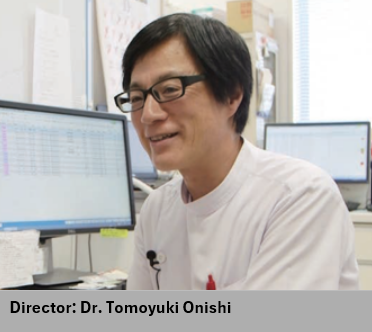
Continued Use of Anti-Inflammatory and Analgesic Treatments for More Patients
Dr. Onishi’s Perspective on Orthopedic Care and Rehabilitation
At our clinic, we provide only outpatient care and do not perform surgeries. Therefore, our primary mission is to detect orthopedic conditions at an early stage and, when necessary, refer patients to hospitals, while doing our utmost to preserve function through conservative treatments until surgery becomes unavoidable. Many of our patients visit us for common issues such as stiff shoulders, back pain, or knee pain, which are among the most frequent complaints in orthopedic clinics. However, we also encounter cases where patients, despite coming to see us for orthopedic reasons, may later suffer from conditions such as cerebral hemorrhage or myocardial infarction. This experience has reinforced my belief that we must look at patients in a more comprehensive way. As a result, we have expanded beyond orthopedics to also include internal medicine, neurosurgery, and gynecology, supported by equipment such as MRI, CT, and endoscopy. In this sense, I see orthopedics as “the gateway to the hospital.” Human beings naturally tend to choose the easier path if left on their own. That is why we encourage our patients to continue coming to the clinic for rehabilitation aimed at relieving pain. For many patients, simply visiting the clinic is already a significant effort, so we strive to provide rehabilitation that they can truly understand, accept, and feel satisfied with. In addition, our clinic integrates Eastern medicine—such as Kampo (traditional Japanese herbal medicine), acupuncture, and massage—together with physical therapy, in order to deliver holistic, comprehensive care.
An Environment that Accommodates Approximately 1,000 Patients per Day
— Factors Behind Being Chosen by Many Patients
Dr. Onishi: When we first opened, the clinic was about 90 tsubo (approximately 300 m²) in size. Before opening an orthopedic clinic, it is customary to study the local population and estimate the potential number of patients. Inami Town, however, did not have a large population. Yet, we soon realized that many patients came by car, and as long as we had sufficient parking space and proper facilities, “more patients would come than expected.” By providing a spacious parking area, ensuring that rehabilitation equipment could be used without long waiting times, and installing the latest machines such as CT and MRI, we created an environment where patients felt comfortable coming. I believe these efforts are the main reasons why so many patients choose our clinic.
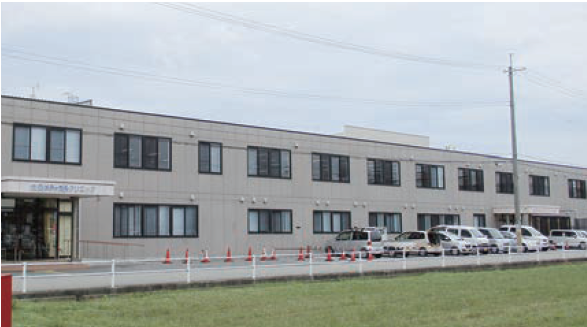
— Purpose of Introducing B-SES
Dr. Onishi: As people age, they gradually become less active and lose muscle strength. I often tell patients, “You should do strength training,” but in reality, most of them do not. At that point, I came across B-SES. With this device, simply wearing it allows patients to perform muscle training, which I thought could help prevent bedridden conditions and promote muscle strengthening. That was the main reason we decided to introduce it. Additionally, more than 30 years ago, when I was performing surgeries at the university, we would always apply low-frequency stimulation after applying a cast in order to help patients maintain muscle activity. However, there were limitations due to pain and the lack of effective devices. I found B-SES to be an excellent machine in that regard, which led us to implement it in our clinic.

— Target Conditions for B-SES
Dr. Onishi: The main target is bilateral osteoarthritis of the knee. In addition to that, we use it for patients whose lower limb muscle strength has declined due to age-related changes.
— Implementation Method and Medical Fee
Dr. Onishi: The procedure is carried out under the physician’s instructions. Rehabilitation assistants directly apply the device to the patients and conduct the session.
For billing purposes, the treatment is charged under the category of anti-inflammatory and analgesic procedures.
Benefits of Introducing B-SES: Continuity of Strength Training and Increased Patient Engagement
— Continuity of Strength Training with B-SES
Dr. Onishi: Patients rarely perform strength training on their own, but it seems that those using B-SES continue with their training consistently. While exploring various methods for muscle training, I believe being able to use B-SES for this purpose has been extremely beneficial for our clinic.
— Word-of-Mouth Feedback on B-SES
Dr. Onishi: Patients who use B-SES often share their experiences with others, encouraging them to try it as well. Gradually, the number of patients using the device has increased. The continuation rate is very high, and positive word-of-mouth has spread widely. I believe this demonstrates the device’s significant effectiveness.
— Future Applications of B-SES
Dr. Onishi: As society continues to age, preventing patients from becoming bedridden is increasingly important. I hope B-SES will be used for muscle training to help prevent immobility and maintain independence in the elderly.
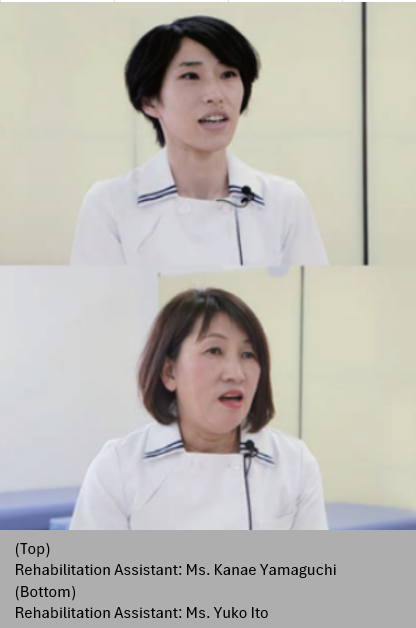
Thoughts on Our Work as Rehabilitation Assistants
We primarily help patients by putting on and taking off the devices during rehabilitation. However, when we see patients who are experiencing severe back pain, we hope that even a little use of these devices can help them feel better. It is especially rewarding when someone who was in a lot of pain feels relief by the time they leave the clinic.
Hearing Patients Say ‘It Helped Me’ After Introduction
— Patient Feedback
Ms. Ito: Many patients use the device repeatedly, so we often ask, “How has it been effective?” or “You’ve been using it for a while—how is it going?” Most of them respond, “I feel better because of this,” and some even say, “This is the best part of the rehabilitation here.”
— Implementation Method of B-SES
Ms. Yamaguchi: We provide B-SES to patients whose rehabilitation cards have been marked by the director. The procedure is the same for everyone: a 15-minute session using the disuse soft mode with belt electrodes.
— Frequency and Number of B-SES Sessions
Ms. Yamaguchi: Some patients come two or three times a week, while others come daily. For those who come regularly, the devices are located at the front of the clinic, and because it can get busy and take time, they usually start with B-SES. I believe many choose to do B-SES first because it is said that acupuncture or massage afterward enhances the effect.
As for the number of sessions, with three devices, we perform more than 30 sessions per day.
— Positive Outcomes from Introducing B-SES
Ms. Ito: The patients’ feedback is the most significant. The most common comments are, “I feel better after using this,” “My legs feel lighter,” or “I’ve gained muscle strength.”
— Effort and Efficiency in Implementing B-SES
Ms. Ito: It does take a little time to put on the device, since patients need to get onto the bed and adjust their clothing. However, when we hear patients say that they get better or have seen improvement, we are happy if they can make use of the equipment available at our clinic. For some patients who arrive with limited mobility—such as difficulty moving their legs or taking steps—they may not yet have instructions from the director. In such cases, we sometimes take the initiative and ask, “How about trying this device?”
— Future Prospects for B-SES
Ms. Yamaguchi: I think it would be beneficial to have a simpler version that could be used at home to help prevent muscle loss in elderly patients. Also, we don’t use it much with younger patients here, so it could be promoted for muscle recovery after injuries as well.
Ms. Ito: In home rehabilitation, there are patients who can no longer walk. If we could bring the device to those patients, it would be very useful. Since attaching the device can be a bit difficult in such situations, having a simpler, more portable version would be ideal.
